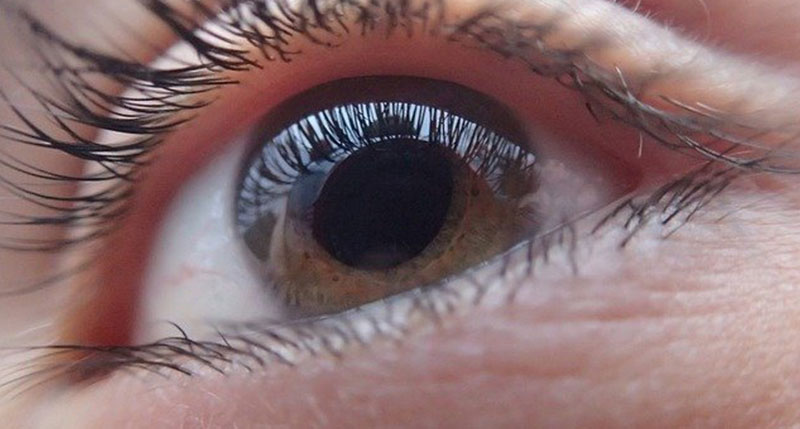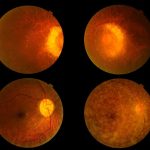January is Glaucoma Awareness Month, a time to draw attention to one of the leading causes of blindness and vision loss in the United States. Glaucoma is known as the “silent thief of sight” because it doesn’t have any noticeable symptoms in its early stages. It’s not painful or uncomfortable—but if you have glaucoma and don’t know it, it can cause permanent vision loss.
Glaucoma can only be diagnosed through a dilated eye exam. That’s one reason why it’s critical to schedule a comprehensive, dilated eye exam with your optometrist each year after age 40. While there isn’t a cure for glaucoma, when caught early, proper treatment can often stop the disease from progressing and help people with glaucoma preserve what vision they still have.
A glaucoma diagnosis can be discouraging and a bit scary. However, more than 80 million people worldwide and 3 million people in the U.S. are living with glaucoma. People at high risk for the condition include:
- People over the age of 60, especially those of Latin American or Hispanic descent
- People of African American descent over the age of 40
- Anyone with a family history of glaucoma
Here are 6 tips for living a fulfilling life after a glaucoma diagnosis so you can prevent or slow its progression and maintain your sight:
- Take Your Medication On Time, Every Day. Once diagnosed, your eye doctor will help you establish a glaucoma treatment regimen. You may need to take oral medication and/or use eye drops each day. It’s critical to adhere strictly to your medication regimen. Set a timer or a daily alert on your digital device to help you remember when to take your prescription medications. Taking your medication daily on a regular schedule is important in slowing the progression of the disease.
- Get Smart About Glaucoma. Knowledge is power. The more you know about glaucoma, its progression and various outcomes, the better you’ll be able to manage it. Google glaucoma and read all about the condition. Talk to your family members who also have the condition and ask how they’re managing it. If you come across any questions, write them down so you can ask your eye doctor at your next appointment.
- Commit To a Healthy Lifestyle. It’s important to do everything you can to promote overall good health when you have glaucoma—every step toward improved health can also affect the health of your eyes. If you are a smoker, become a non-smoker—and do it today. If you regularly make unhealthy meal choices, start making healthier choices. Focus on fresh, whole foods, fruits and vegetables instead of fast food, processed snacks and frozen meals. Make an effort to include dark leafy green vegetables and healthy proteins in your diet each day. Exercise is critical to good health, but be sure to consult your optometrist about which specific exercises you plan to do, as intense exercise can increase the intraocular pressure of your eyes.
- Find a Support Group. After a glaucoma diagnosis, it can be helpful to speak with others who are in the same position. Millions of people are living with glaucoma, so reach out and find them. In addition to local support groups both online and in-person, talk to friends and neighbors to find other people living with the disease who can share their best practices, tips and ways to lead a fulfilling life. There are also private Facebook groups, including the Glaucoma Eyes group, where people share their experiences.
- Befriend Your Optometrist and Their Team. Be proactive about keeping your regular appointments with your optometrist. Your eye care team needs to see you regularly to closely monitor your condition and any changes. Talk candidly with them about your experience with your treatment plan and how it’s working for you. Your optometrist can recommend good ideas and resources, such as vision rehabilitation, low-vision therapy, or specialists that may benefit your specific condition.
- Adopt Smart Practices at Home. Depending on your severity of vision loss from glaucoma, it may be helpful to adopt some best practices for living with low vision:
- Remove trip hazards, such as area rugs
- Install extra lighting to increase visibility in dark hallways, pantries or closets
- Mark stairs and handrails with brightly colored tape or paint to increase contrast and minimize the risk for falls
- Make a habit of reaching your hand 12 inches in front of your head before bending down or standing up. This will ensure you don’t hit your forehead on a countertop, piece of furniture, or cabinet edge.
While there is no cure for glaucoma, people experiencing the condition can enjoy a normal, active, and fulfilling life by keeping the condition under control to slow or prevent vision loss.
If you’re living with glaucoma or suspect you or a loved one may be at risk, call today to make an appointment for your annual comprehensive eye exam.






